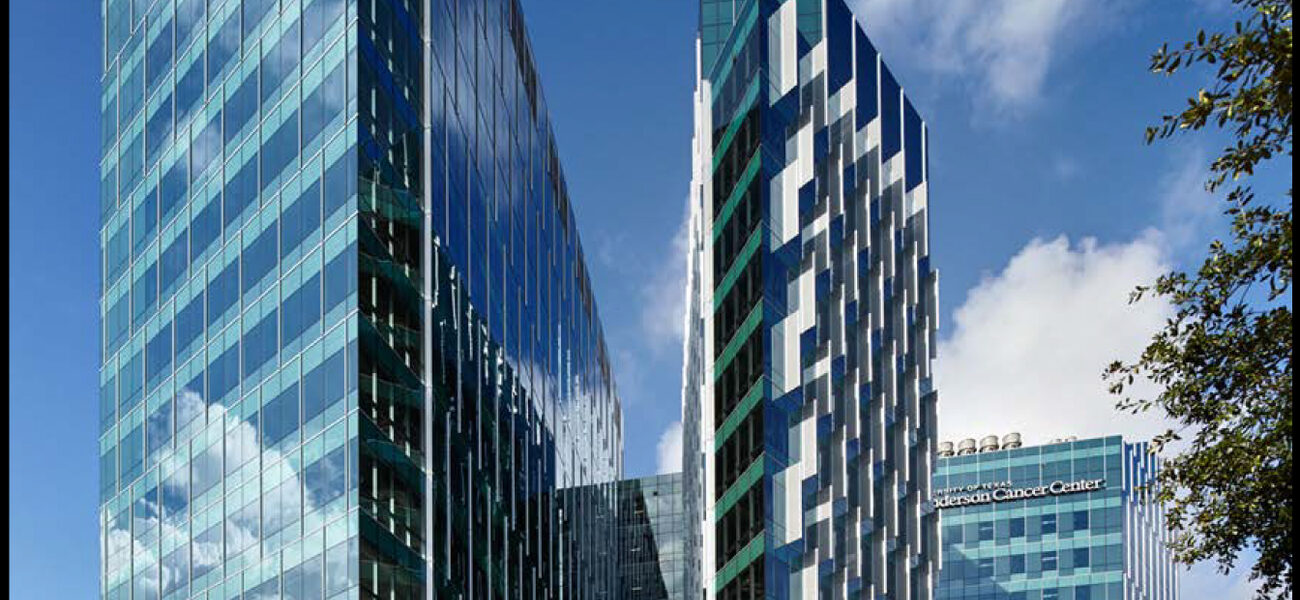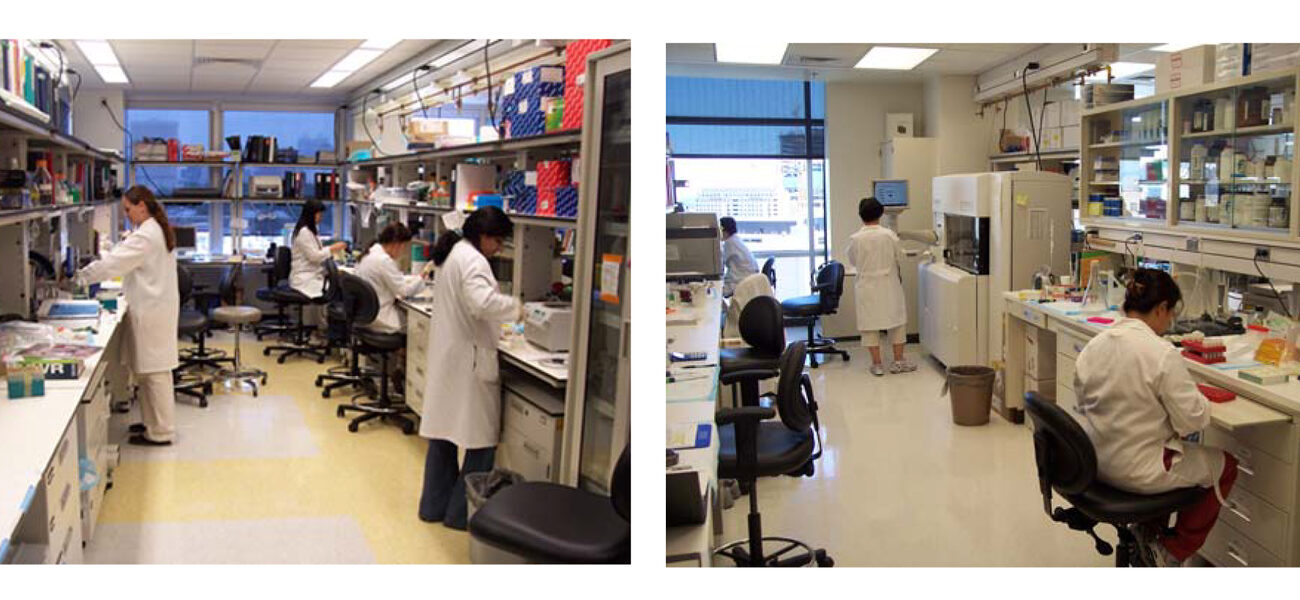With a portfolio of 23 research buildings ranging from 30,000 gsf to almost 800,000 gsf, the research portfolio of the University of Texas MD Anderson Center in Houston covers nearly 4.5 million gsf. Despite bringing 11 of those buildings online in the past 15 years—nearly one building per year—the researchers at MD Anderson were left wondering why, even with all those facilities, there did not seem to be enough space. This was partially due to unprecedented growth, now with close to 22,000 employees, but that didn’t fully account for the problem. This leaves MD Anderson with another task: “To redefine how we allocate space, with the goal being to determine how much space a researcher needs to be successful in their research,” says Jeff Ellard, manager of facilities planning, who has been responsible for lab planning and strategic research space management for 15 years.
Fifteen years ago, when MD Anderson began to transition from insular labs to the now more familiar open labs, the newly acquired space efficiencies weren’t completely understood, which didn’t allow the faculty to take full advantage of them. Ellard’s advice to capitalize on these space gains has been to throw away the old entitlement metric for space management, and design an entirely new metric based on density, instead. In doing so, Ellard has freed up more than 20 percent more space for program growth.
New Metric
Originally, the metrics for a lab would depend on three major criteria: productivity; funding (dollars per square foot); and, importantly, seniority and title. With this method, a full professor with a three-person staff would be entitled to up to 3,000 sf of lab space, whereas a well-funded assistant professor with a staff of 12 would be granted only 750 sf. The goal of the project was to take politics out of the equation, and in doing so to create a more productive, space-efficient environment. For the research leadership president, this was simple: density equals productivity, and the lab spaces must be built around this model.
Ellard, who had the job of allocating the space, wanted to make sure that the change was sustainable and cost-efficient. He hoped for simplicity, but not a system so formulaic that it would be a thoughtless procedure. The solution was a system that determines the two real space drivers: the number of people working in the lab and the equipment load.
From this came the standard of 125 sf of dedicated assignable lab space per fulltime equivalent (FTE), which translates to five FTEs per laboratory bay. FTEs are defined as someone who works 100 percent in the lab for at least one year. This includes fellows, post-docs, associates, assistants, and technicians, but not the PI, visiting scientists present for less than a year, summer students, or student externs. This model also does not include office spaces, shared research equipment spaces, radioisotope rooms, fume hood rooms, flex rooms, or environmental rooms. To account for equipment load, a 1 to 3 scoring system was developed, a 2 score representing the average amount of equipment being used in a lab. Any less than 25 percent of a space taken up by equipment would be a light load, and would be marked as a 1. Any more than 50 percent would be a heavy load, and marked as a 3. This metric was then applied to everyone. The provost himself insisted on its use, and as a result was assigned less space than what was written in his offer letter.
FTE Validation and Flexibility
The idea of the metric is fine in theory, but in order to apply it credibly, the space drivers must be validated, to catch FTEs who should not be included in the total and to assess the equipment score, before being assigned a number. A rough estimate of space is made, then the space begins to be designed, and the people accounted for. A hard number is given only after this planning is completed, making the process fluid until the end.
Despite this new metric, flexibility and adaptability are still the cornerstones of space design at MD Anderson. The metric is also influenced by related spaces drivers, such as operations, processes, protocols, adjacencies, collaborations, multidisciplinary research, and future growth. Mobile casework makes the flexibility possible, allowing for increased linear space while keeping the same square footage. Flexibility and mobility are crucial for collaboration, especially as the lines blur between traditional research, basic sciences, clinical research, and other activities. As the vice provost says, “everything is translational.”
Applied Laboratory Metric
The idea of the “open lab” was proposed even before the new metric was in place. In 2001, the 800,000-sf Mitchell Basic Sciences Research Building became their first to contain open lab spaces. However, the then-president was reluctant to fully endorse mobile casework and open spaces, so the building became a hybrid between open and closed lab styles.
When the new lab metric was applied to the equivalent of seven vacant lab bay spaces on five of the six floors, a 20 percent increase in usable space was realized, with a threefold increase in vacant floor space, the equivalent of 22 vacant lab bays. Rather than clearing an entire floor for future growth, space pockets were distributed throughout the building.
Ellard points to one faculty member as an example of how the metric was applied. As a full professor, she previously would have been entitled to up to 2,000 sf of lab space. With the new metric, she is given an equipment score of three. She brings with her eight FTEs, which, combined with the equipment score, allows her only 1,000 sf. Despite having half as much space, the faculty member is working successfully in her efficient new space, proving the effectiveness of the metric.
Applied Office Metric
With the metric working well in the lab, MD Anderson turned to its offices space, beginning with an "office equivalent" rather than square footage. Once defined, the office equivalent is then matched with a particular function to make the space most conducive to the occupants. The first step was to compile a list of research personnel by function rather than title. A post-doc, for example, gets the office equivalent of one, based on a 120-sf office. It is common to put four people in that 120-sf space, which yields the equivalent of 30 sf per person.
The full professor who was allocated less lab space would also have been allocated 1,000 sf of office space using the entitlement metric. However, applying the new metric, it’s noted that the faculty member brings with her eight FTEs, and two administrative FTEs, including herself. The office equivalent, assigned from that list, equals 16. Multiply this by 30 sf per person, and the professor gets 480 sf of equivalent office space for her and her research staff, which, as in her lab scenario, is about half the square footage, but more than enough space to work effectively.
Faculty Pushback and Managing the Change
Despite these major changes, Ellard says he got less pushback from the faculty than expected. The project is based on data, and “you can’t argue with data,” he says. The researchers in the building were continuously shown the data, and taken into the building to see how the space was functioning. MD Anderson’s Sheikh Zayed Bin Sultan al Nahyan building, which was partially built out, was used to show faculty members the space division, and demonstrate that five people could, in fact, fit into the space allocated by the metric.
Ellard cites competent leadership as a huge factor in managing the changes. “We already had the support of our president,” he said, “and leadership began meeting with division heads and high-level chairs.” He stresses that “not everyone thinks this is wonderful,” but this won’t be stopping him and his team. “There are some still that are fighting it, but we say resistance is futile, and we say we are going to continue marching down that path.”
By Anita Woofenden

